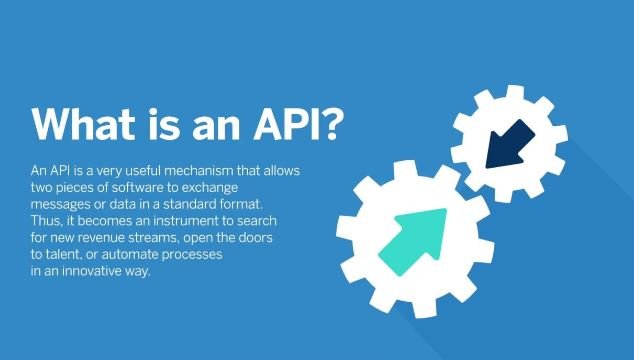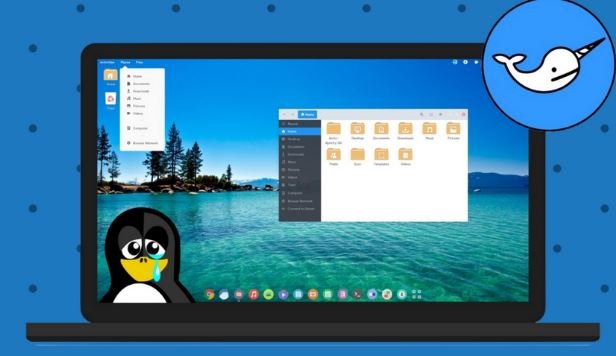These days, all of us use the internet on a daily basis. That means, every single one of us has interacted with an API. Maybe you don’t notice APIs, but they are there. API is actually an acronym, which stands for Application Programming Interfaces.

And just what is an API anyway? As simply as we can put it, an API is a program that allows two applications to communicate and share information with each other. But let’s explain it in more detail, shall we…
What is an API and How Does it Work?
Sharing information isn’t always easy for humans, let alone applications. Just see how is easy to have a misunderstanding in everyday communication.
And machines are very limited in what they can do. They will do only what you told them to do, like some very literal person.
For example, application will use API of some other application to gain new functionality. Or multiple applications can communicate and benefit from each other.
Probably most known example is Yelp using Google Maps API to show the location of a business on a map.

An API will only use a part of a program’s database. That means, some of the more sensitive information will stay safe.
This is a very efficient way of sharing information, however, there are some negative sides to it as well. The biggest downside to it is the limited amount of information the program has access to.
In order to be useful, an API has to be well-documented. That’s why programmers often use service virtualization tools, which help them make their documentation more readable.
The goal is to keep your program updated and to meet the market demands. Interestingly enough, there’s still a ton of apps that relies on outdated APIs.
How to Use an API Properly?
The APIs are invisible for the majority of people, because they do all of the dirty work in the background. Like we said before, they are mainly used for exchanging information between two applications. However, their real strength is shown when it comes down to synchronizing data.
In order to do that, the mapping between applications needs to be done correctly. Information that is entered in the field in the first application, needs to match a field in the second application. Mapping is something that is frequently used in all kinds of sharing information.
What Types of API Exist?
Listing all different types of APIs would take a book. For that reason, we’ve decided to talk about the main types of APIs to help you familiarize yourself with the basics. The four main types of APIs include:
1] Web Service APIs
They are used for exchanging information between the web service and application. This is mostly done through HTTP and HTTPS. Request and response, and HTTPs of web service contain all kinds of information and metadata. Formats that are used for this are mostly XML and JSON.
2] Library-Based APIs
This type allows applications to import a library from a software, and to be able to exchange information. Most libraries today are developed in JavaScript. APIs in JavaScript is a great example for a Library-Based APIs, especially those that are used in web mapping market.
3] Class-Based APIs
These types are used for connecting to data that is organized around classes. This practice is commonly used for programming in Java, which is an OOP. Java`s API is creating applications by using abstract classes. Those classes are providing all necessary things to put all functions in these applications to work.
4] OS-Based APIs
Those are used for communication between software programs and operating systems. Operating systems have APIs that is making this communication possible. For example, some of the Windows APIs are: user interface, graphics, messaging, data access etc.

How Can an API Help My Business?
Since so many companies nowadays have their own APIs, it’s safe to assume they are beneficial to business. But you’re probably now wondering – how can an API help your business grow? Well, there are more than a few ways in which an API can help you:
• It can improve the loyalty of your users and in the end improve your conversion rates.
• It can give your CRM more social insights and help you grow your customer database.
• It can allow you to exploit the remote processing power for business intelligence.
• It can help you have more storage for your business information.
In the end, the biggest benefit of an API is that it can allow you to create an app with lot less work. By using an API, you allow your programmers to give your app new and exciting functions without writing a single line of code. This will not only make their job more easier but it will also save you a lot of money in the process.
The Bottom Line
The matter of the fact is, as a business owner, you don`t need to know how APIs exactly work or what they are, to benefit from them. However, if
With that, we’re finally done. We hope you enjoyed our article that you found it interesting and helpful. As always, if you have any additional questions, feel free to ask them by leaving a comment in the comment section below. One of our staff members will answer all of your questions as soon as possible.

